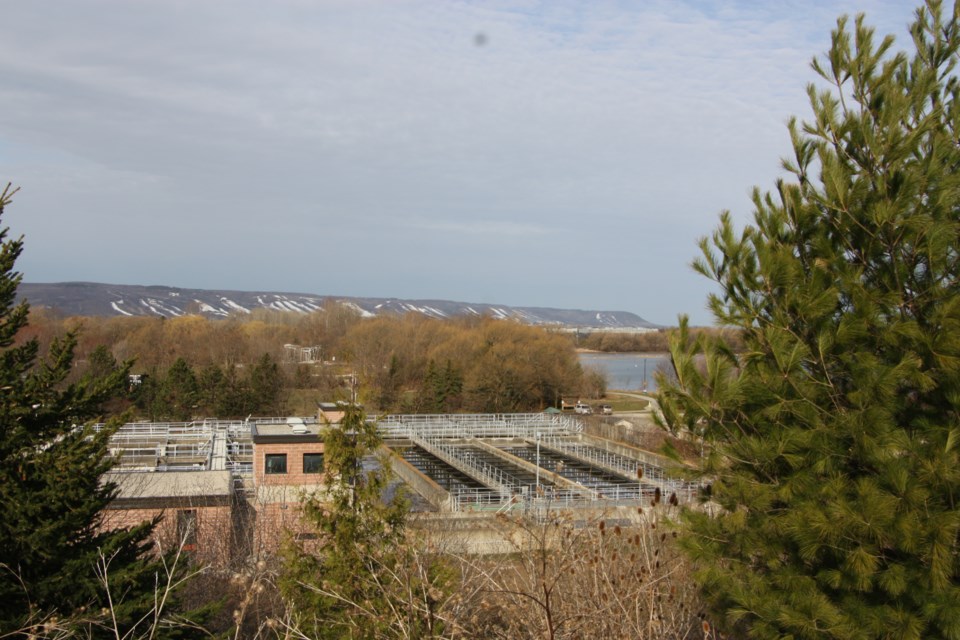Some of Collingwood’s wastewater went into Georgian Bay — untreated — last week during a heavy rainfall.
The town announced a "full treatment bypass" occurred at its wastewater treatment facility on Sept. 23, lasting 14.5 hours.
There was also a "partial bypass" for 21.5 hours during last week’s rainstorms.
A full treatment bypass is rare, but it can occur when heavy rainfall causes an overflow at the wet well portion of the plant. According to the town’s environmental services manager, Heather McGinnity, the excess water will overflow, bypassing the entire wastewater treatment process. It will fall into treated and partially treated wastewater before discharging directly into the bay.
The extra water that enters the wastewater treatment plant during a storm is from sources referred to as "inflow and infiltration." According to McGinnity, this water can come from various sources including downspouts and sump pumps connected to the sanitary sewer, groundwater and rainwater infiltrating through cracks in the sewer pipes and/or maintenance hole structures, and from overland flooding draining into sanitary maintenance holes.
Not all of the wastewater flowing to the treatment plant for those 14.5 hours bypassed the treatment process; only the water that overflowed. The town also added chlorine pucks to the discharge pipe to add an alternate form of disinfection for the wastewater that bypassed the treatment process.
A partial bypass, though still uncommon, occurs more often. There was one partial bypass in June 2020. In this case, wastewater is mostly treated, but skips the UV disinfection step.
“Bypasses and overflow events help prevent sewer back-ups from occurring,” explained McGinnity. “If the treatment processes are not bypassed, the excess wastewater would fill the sanitary collection system pipes and start backing up into residences and flowing up through maintenance holes on the streets.”
Last week’s rainfall caused the level and flow rates in the Pretty River to rise to record levels not seen since 2016, and the second-highest levels on record since 2006.
According to McGinnity, when the partial bypass occurred in June 2020, it was during a very short, but intense rainfall with 26.5 mm of rain measured in just over one hour.
Last week, McGinnity said there was about 118.3 mm of rain measured in approximately 35 hours.
For both partial and full bypass events, the town is required to report to the Ministry of the Environment, Conservation and Parks Spills Action Centre, and to the medical officer of health. Reporting was carried out for last week’s bypass and the town posted a public notice on its website.
Samples were collected at the discharge site.
McGinnity noted that any storm event can make the water hazardous to swimmers.
“As with any great storm event, there is a greater likelihood of ‘dirty’ and contaminated water being present along the shorelines, and, in particular, in the harbour area when wastewater overflows occurred,” said McGinnity.
This is the first bypass event this year.
According to the most recent mid-year update from the waster and wastewater treatment plant staff, the town's wastewater treatment plant operated at about 57 per cent capacity between January and June.



